Journal
Interview with Arctic artist Georgia Rose Murray
Interview with Georgia Rose Murray on her Arctic sketchbooks
Introduction by Gavin Ambrose
I recently had the pleasure of talking to artist Georgia Rose Murray about her Arctic sketchbooks that she produces on research trips. These concertina books are amazingly beautiful but are in fact driven by practicality. It is obvious really, that when you are in a hostile environment, with extreme weather and polar bears to contend with, you need to work in segments, and the concertina sketchbooks offer a solution to that. Having seen these sketchbooks I have worked with Georgia to bring these into print reproduction. Love the scale and commitment behind these arctic sketchbooks.
What was your journey into the arts and painting?
I have been painting for as long as I can remember. At school I was in my element in the Art room and in 2005, I moved to Scotland to begin a degree in Fine Art at Duncan of Jordanstone College of Art and Design, where the beautiful big studios felt like home.
I graduated in 2009 with a 1st Class BA Honours degree in Fine Art and was selected to make four big paintings for the Royal Scottish Academy’s New Contemporaries 2010 Exhibition, where I won the Landscape Painting Award.
After that I moved to Taiwan with my boyfriend, to earn money teaching English and to paint. We fell in love with the exotic, colourful landscape, hot climate and the welcoming people.
Between 2011 and 2013 I completed an MFA in Contemporary Art Practice at Edinburgh College of Art, with a sojourn to Hong Kong for several months in between 1st and 2nd year.
Since then, I have been predominantly painting, as well as Lecturing in Art part-time, across various Scottish Art Schools and in China.
Why are you specifically interested in the Arctic?
Arctic light and colours thrill and fascinate me. Due to the way light is refracted in the far north we see a different range of colours than is possible at lower latitudes.
Since 2016, when I was first invited to work as guest researcher at the Czech Centre for Polar Ecology, I have also been growing my knowledge of Arctic science, leaning about geology, biology, glaciology and how the whole environment is shifting in various ways due to climate change.
Hostile weather and conditions
You paint and sketch in remote locations, often in hostile weather conditions. What particular challenges and opportunities does this bring?
I’ve travelled north to paint in response to each Polar season. During every research expedition something about the natural light, darkness and weather, has revealed itself unexpectedly.
My rucksac always has a varied range of painting equipment (surfaces and mediums) ready to use and I need to be looking and responding in open and flexible ways- so I am available to change plans and work rapidly in response to the light and wind and ice.
Despite careful planning, I still sometimes find myself stumped and at those points conversations with scientists at research stations are invaluable. During the last expedition I made, to witness Arctic sunrise, the average temperature was minus 30 degrees Centigrade and wind was gusting at minus 40-50. Ice was instantly forming on the surface of paintings as I was trying to depict the landscape. My brush quickly became a stump of ice and the colours I had mixed froze over in seconds. My eyelashes were becoming heavy with icicles and my hands were beginning to experience frost bite.
A kind man called Atle gifted me the key to the LoFF Bird watching hut (unheated and without lighting but wonderfully protective from the strong wind), which is usually locked up until summer. On the edge of Adventdalen Fjord, the windows of the hut provided the perfect vantage point to watch sea ice blowing in and out of the fjord, in front of the mountains, which were slowing illuminated by a vibrant pink glow as the sun began to rise.
Extreme temperatures
It was so cold that even hot water from my flask wasn’t working as a fluid medium to mix and apply paint. After chatting to Czech scientists one evening, I returned to paint in the bird hut with a jar of 97% Ethanol- traditionally used to clean scientific instruments. The viscous slippery liquid then became the successful medium I mixed with pigments for the rest of that expedition.
Over one day and night I decided to make a 24 painting in the bird hut. Using a large concertina book, I painted the same bit of landscape each hour, capturing the changing light. During the darkest hours I couldn’t see the colours I was mixing and I could hardly see anything out of the windows, but I could feel the marks I was making on the paper.
Intermittently I would exit the bird hut to run through the snow and re-fill my flasks with hot water and coffee. When I got tired, I perched on a seat, enveloped in my ethical goose down sleeping bag and drifted off, with an alarm set to wake each hour, so I could continue painting. Being in that hut throughout 24 hours was both an endurance challenge and one of the most magical experiences of my life. In a semi-conscious state, the feathers in the sleeping bag felt like they were lifting me up and carrying me through the landscape. As the sun began to rise behind the mountains, colours subtly morphed in spectacular ways.
The concertina paintings I make capture moments (often several hours), when I am giving my body to being fully immersed in the Arctic environment.
Arctic sketchbooks
How do you ‘use’ a sketchbooks. Is it purely for observation, or does it serve another purpose. By this I mean is the act of sketching also fulfilling other needs.
The Concertina sketchbook paintings I make, whilst immersed in Arctic landscapes, are completely created ‘en plien air’ and later exhibited in galleries, without any final touches or changes having been made. I find the immediacy of the way I channel landscapes by drawing and painting in sketchbooks to be holistically fulfilling.
All of the drawings and paintings in make in various sizes and formats of sketchbooks (I always have multiple large and pocket-sized books on the go at any one time), are potent points of reference for the much larger, oil-based paintings on wood, which I create in my studio.
The sketchbooks hold massive amounts of information, which re-emerges in the studio. As I flick through pages, visual memories ignite a visceral response throughout my whole being. I remember the action of creating the painting and feel the essence of the landscape emerging.
What are you hoping to achieve through this body of landscape work you are producing?
The work I create aims to provides windows through which viewers can transcend and connect to remote wild places, which are rarely experienced by humans. The stripped back, poignant beauty of Arctic landscapes can be challenging to imagine, so it’s important to try and share what it’s like on multiple levels.
Communicating via making presentations and telling stories, at conferences and with various other communities, feels to be a positive way to connect. Whilst up in the Arctic I often have conversations about how Artists and Polar Scientists could better collaborate and share information, about climate change for example.
More about Georgia and her Arctic sketchbooks on our artists page…
More about Georgia and Arctic sketchbooks
Georgia Rose Murray website…
Visit Georgia Rose Murray Website
Images of Georgia in the Arctic and her Arctic sketchbooks

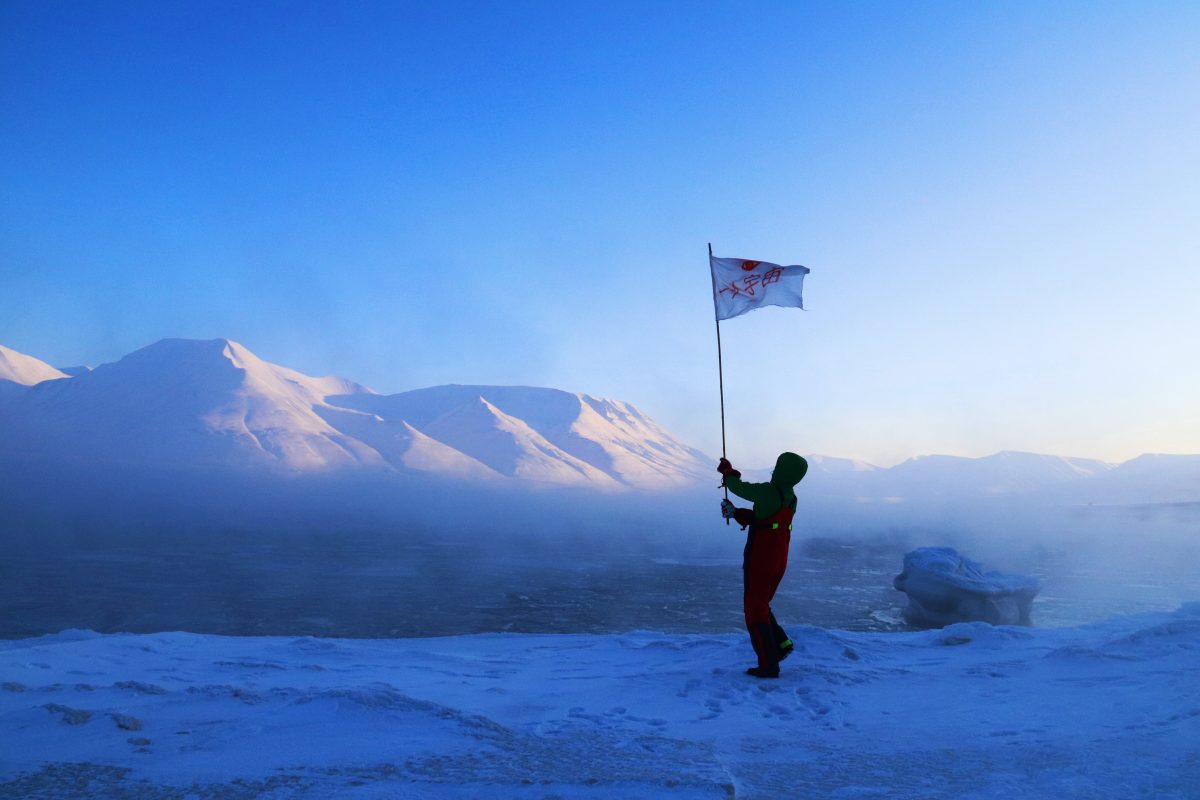
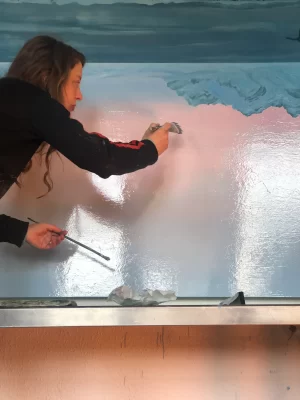
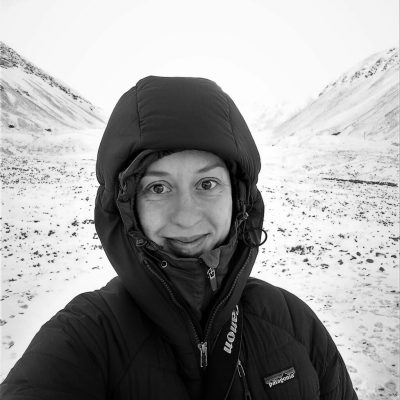
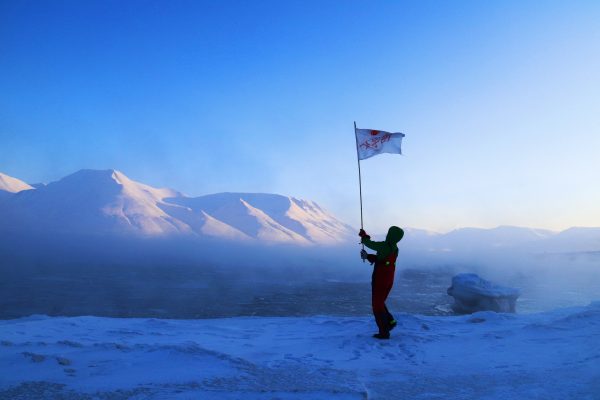
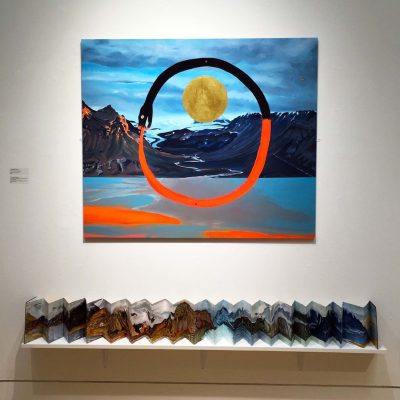
Do you like this artist?
If so, why not write a comment or share it to your social media. Thanks in advance if you can help in this way.